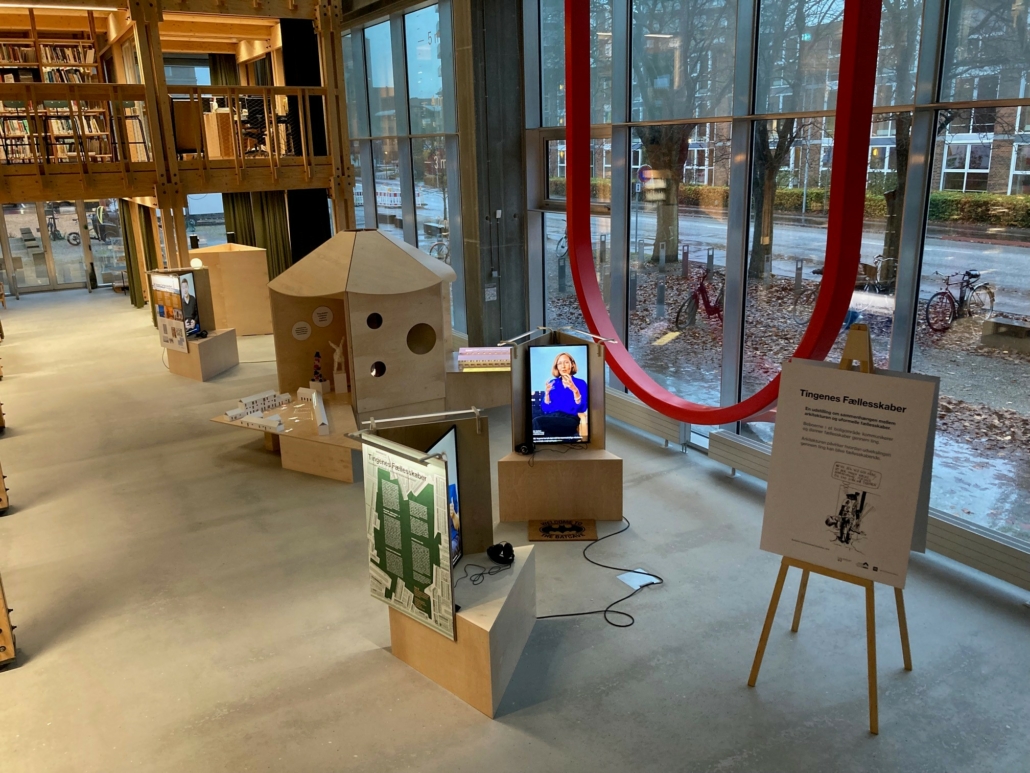Tingenes fællesskaber
The exhibition Tingenes fællesskaber presents one of the main points of the project, highlighting how residents in Danish social housing areas form communities in many different ways.
Flexible Communities is a research project in collaboration between Aarhus School of Architecture and the National Museum. The exhibition Tingenes fællesskaber presents one of the project’s main points, which highlights that residents in Danish public housing areas form communities in many different ways. The exhibition shows that things play an important role in the informal communities that take place between residents and that architecture plays an important role in how exchange and communication through things become community-building.
//
The vision of creating strong social communities is a cornerstone of the Danish public housing sector. Denmark’s 589,707 public housing units provide a framework for housing-related communities for approximately 990,000 Danes – one sixth of the population. However, many residents experience that local communities are increasingly under pressure. Resident democracy is rapidly changing, and fewer participate in organized communal activities, associations, and events. Many residents point out that “less is happening” than before. However, this does not mean that strong local engagement and robust communities do not exist in public housing areas.
Informal communities are highly engaging
Based on historical, anthropological, and architectural studies, the Flexible Communities project proposes that strong local engagement should also be sought in informal communities that engage residents and create connections across social, cultural, and economic divides. These communities are often overlooked because they arise and operate without fixed meeting places, times, or memberships. Nevertheless, they have great significance for residents’ sense of belonging and their desire to care for the wellbeing of the housing area. This exhibition will show how informal communities arise and are practiced through residents’ interaction with ‘things.’ We have given this practice the term “tingning.”
Communities of Tingning
A retired woman keeps the lights on her Christmas light chain so that the neighbor’s children do not feel unsafe when cycling to school on dark winter mornings. A tinsmith, who is a widower, feels proud and happy when he sees the hanging flower pots he has made for his neighbors. A mentally vulnerable woman uses a shopping cart to remove her garden waste so it does not bother the neighbors. A mother of two enjoys the cozy sight of lit lanterns in front of her neighbor’s door. An elderly lady feels useful when she can use a shopping cart to transport her grandchild’s laundry. An early retiree and a family with children decorate their house facades together for Christmas and are happy when they hear passersby comment on the decorations. A young couple notices the lovely atmosphere in the courtyard when neighbors put out flower pots in the spring.
As these examples show, social relations and neighborly connections are anchored in residents’ tingning with ordinary everyday objects; shopping carts, light chains, lanterns, and flower pots. However, the importance of tingning also raises the question: How should we build for the communities of the future if tingning is central to residents’ engagement and social relationships?
The Role of Architecture
Residents’ many and varied ways of “tinge” never happen isolated from the built environments and architecture of the housing areas. The structure and architecture of housing areas play a crucial role in residents’ opportunities to interact with each other. It is to a large extent the architecture, design, and layout of the housing area that determine how we can move, where we can look, and what we can see and hear. This applies both inside our own homes and when we are in the common spaces of the housing area. Architecture therefore constitutes a central tool to create the best possible conditions to support the existence of viable, informal communities.
With this exhibition, we therefore wish to focus on the “architecture of tingning” as a way to understand and strengthen local, informal communities in Danish public housing areas.



